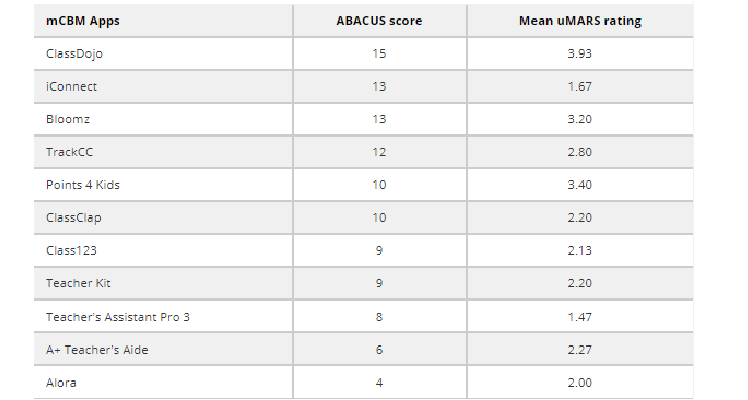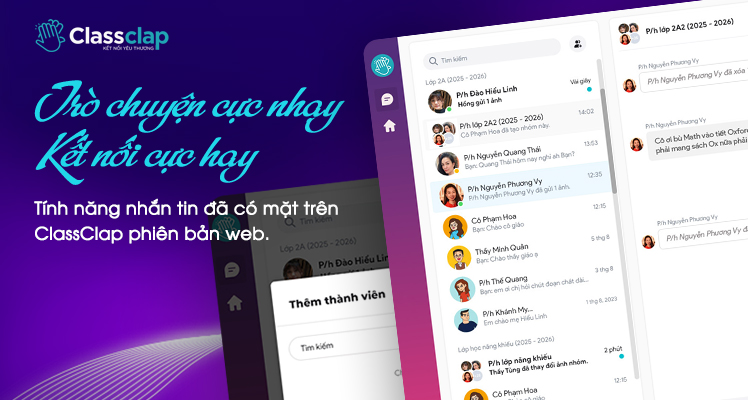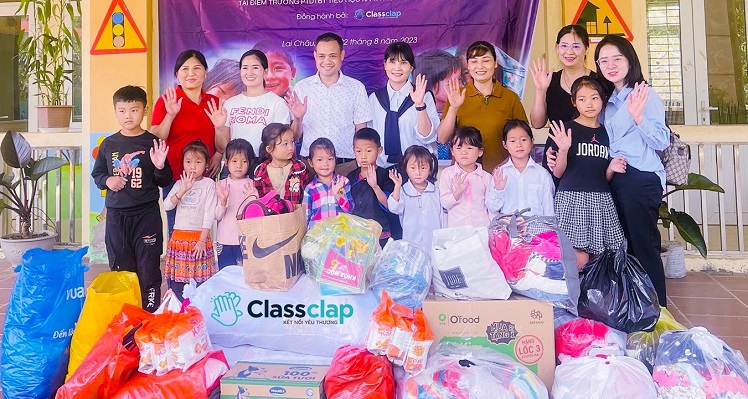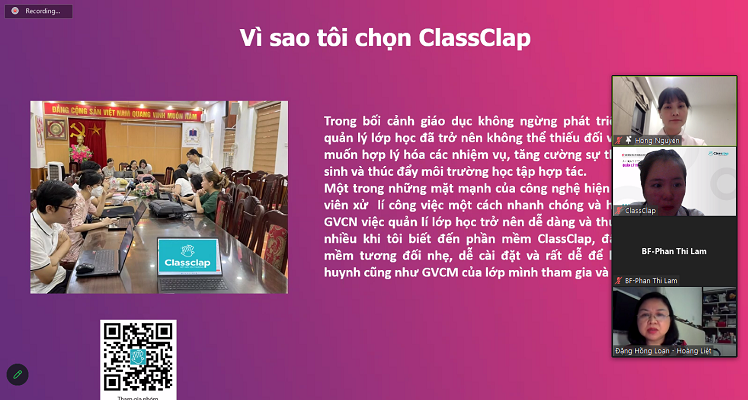
ClassClap application contributes to changing classroom behavior
That is the information that the study “A Content and Quality Evaluation of Mobile Classroom Behavior Management Applications” recently gave about the ClassClap application.
That is the information that the study “A Content and Quality Evaluation of Mobile Classroom Behavior Management Applications” recently gave about the ClassClap application.
The study “A Content and Quality Evaluation of Mobile Classroom Behavior Management Applications” by Sharon R. Mittiga, PhD Nerelie C. Freeman, PhD, Brett E. Furlonger, PhD, Perrin Chan, MEdPsych and Erin S. Leif, PhD was published online on SAGE Journals on March 6, 2024.
Sage Publishing, formerly SAGE Publications, is an American independent academic publishing company, founded in 1965 in New York City by Sara Miller McCune and now based in the Newbury Park neighborhood of Thousand Oaks, California. Sage Publishing has offices located across North America, Europe, and the Asia Pacific region. It publishes more than 1,000 journals, more than 800 books a year, reference works and electronic products covering business, humanities, social sciences, science, technology and medicine.
>> See more: Many teachers are interested in the Webinar “Applying technology in modern school management”
SAGE Journals is a collection of high-quality international research journals published on behalf of more than 245 academic and professional associations. SAGE Journals includes more than 962 scientific journals in the fields of Social Sciences & Humanities, Science & Technology, Economics & Development, Applied Sciences, Engineering & Computer Science, Earth Sciences, Life Sciences, etc. Therefore, this site is one of the reliable addresses for researchers to publish and research documents.
The study “A Content and Quality Evaluation of Mobile Classroom Behavior Management Applications” evaluated the quality and behavior change techniques (BCTs) included in 11 freely available mobile classroom behavior management applications (mCBM apps).
In this study, the authors refer to ClassClap as one of 11 mobile classroom behavior management applications presented for analysis. The study refers to the ABACUS and uMARS indices: The ABACUS assesses the potential for behavior change of mobile applications; The uMARS is designed specifically for end users of apps without training and expertise in health sciences. The uMARS consists of 20 items subdivided into five categories: Engagement, Functionality, Aesthetics, Information, and Satisfaction.
In this study, ClassClap was ranked 6th out of 11 analyzed applications. Accordingly, ClassClap has an ABACUS score of 10, equal to the application “Points 4 Kids” and an Mean uMARS rating of 2.2, equal to the application Teacher Kit. ClassClap is also the only application from Vietnam included in this study.
The BCTs were divided into four groups in the study, and ClassClap was mentioned in three-quarters of this criterion group.
Firstly, on Knowledge and Information, ClassClap possesses the ability to customize and personalize features within the application through specific tools and functions; The application is created with expertise and/or includes information consistent with national guidelines; Cost consequences of the behavior in general (e.g., response cost system, taking away points).
Secondly, on Goals and Planning, ClassClap has a feature where the user (teacher) sets a behavior goal that is specific to a student or small group of students or classroom (Behavior goals can also be selected from one provided within the app); Review or analyze previously set goals to revise/adjust where needed even when behavior goals are not met.
>> See more: ClassClap contributes to changing the face of educational management in highland areas
Thirdly, on Feedback and Monitoring, the ClassClap application is mentioned as having Visuals including analytics which can be used to monitor progress towards behavior goals; Allows data about behavior goals to be shared with others including on social media or forums for social comparisons (i.e., comparing against peers, data can be viewed side by side for comparison); The app provides the person with feedback, comments or data about their own recorded behavior, either automatic (e.g., auditory feedback such as chimes, vibrations) or feedback from a person (e.g., has to be externally initiated by the teacher upon reviewing the data); Data can be exported to external user (e.g., parents, administrative staff at school, other teachers, school psychologist); Rewards (e.g., points) for achieving behavior goals.
Among the indicators that the study above gives, ClassClap has a fairly high frequency of appearance. This shows that this application has also developed relatively complete features for classroom management.
The article also mentions ClassClap as one of five apps that use visual analytics to help teachers understand the difference between Current Actions and Future Goals. ClassClap showed points earned in a pie chart.
In addition, ClassClap is also one of eight apps that allow sharing of behavioral information with others, including features that allow teachers to share information directly with parents and allow users to provide feedback; allow teachers to export data; award electronic points to students for desired behavior, etc.
The research indicated that apps with more BCTs were not necessarily rated as higher quality based on their uMARS scores. However, the number of BCTs included in apps was positively correlated with the Engagement and Information subdomains of uMARS. Most of apps were designed to be used by the teacher to facilitate the delivery of whole-class interventions.
Thus, this ranking does not fundamentally evaluate the quality of the application, but depending on the classroom model, the applications will be suitable for different needs. When the research team created the product, ClassClap was oriented to become a highly customizable application, suitable for many models of schools and classrooms domestically and internationally.
As for the ClassClap app itself, the study also marks the scientific recognition worldwide. In addition to being technically recognized for serving international schools as it has been used by schools in many countries over the past time, ClassClap now has additional scientific evidence to prove the power of applying technology to change the classroom.
This shows that the relentless efforts of the ClassClap team are bringing positive signals to contribute to changing the global education. ClassClap always wants to provide classroom management applications for the future generation to maintain the goal of building people.
See original article here





